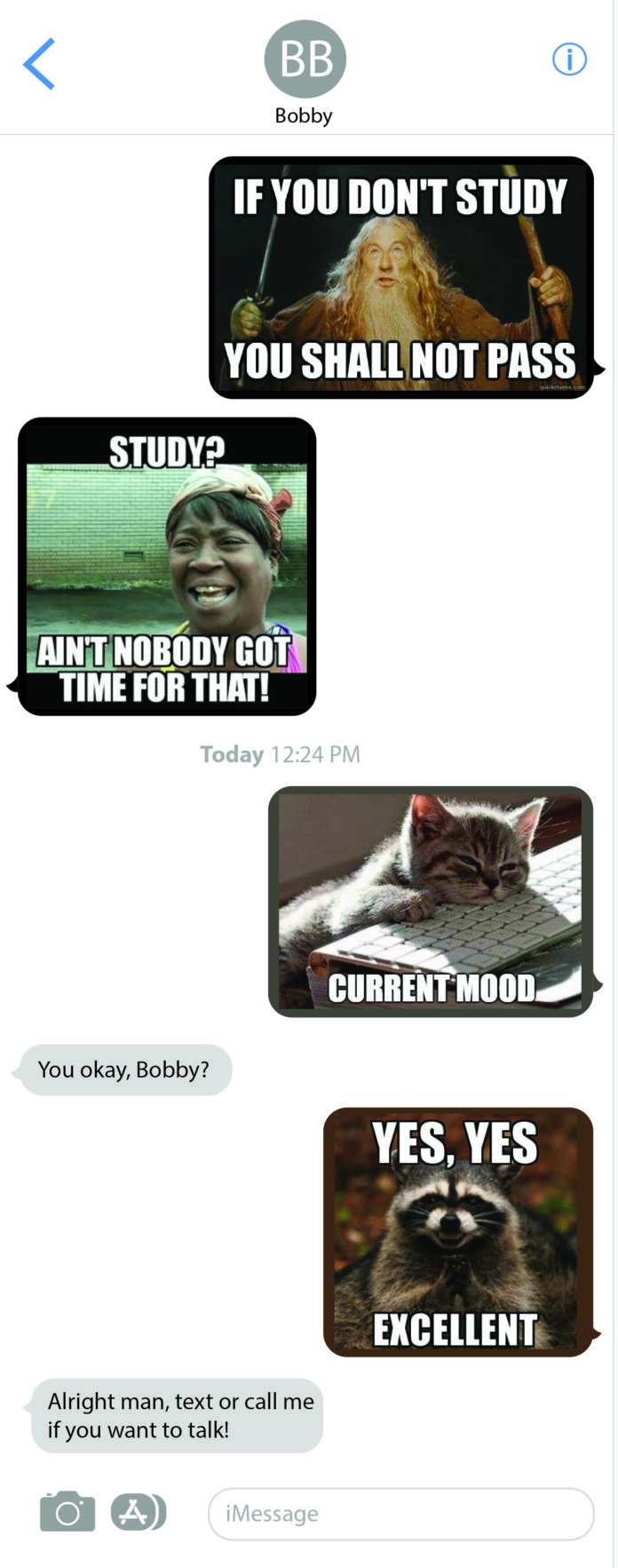
The facets of social media — an image-saturated, language-fluid, highly-politicized environment — breed divisive in-groups, Baylor experts find.
Dr. Leslie Hahner, associate professor in communication, said social media creates “ecosystems” of thought.
“Because all social media is built on algorithms, those social media cater to your specific tastes,” Hahner said. “Those ecosystems don’t expose you to opposing beliefs, or things that challenge that, and that can create some problems in terms of how we relate to other human beings.”
Hahner described the constant reinforcing feedback as “toxic to some extent.” According to Hahner, individuals in highly saturated ecosystems are “more difficult to persuade, more difficult to move, because they are so inundated with something that only convinces them that their point of view is correct.”
“[Ecosystems] diminish our ability to care for one another, honestly, or at least to relate to one another in a more robust sense,” Hahner said.
Dr. Jeannette Marsh, associate professor and coordinator of the language and linguistics program, said social media is a platform for assigning new meanings to everyday things, such as clothing, hairstyles, home decor and even behaviors.
“The meaning you assign to an object could be different than the meaning I assigned to an object,” Marsh said. “The only way I can know what that means is to be a part of your immediate in-group that has all assigned the same meaning to whatever it is.”
Hahner and Marsh identified the image-dominated media, the evolution of language and partisan animosity as aspects of social media that deepen divisions between people groups.
Hahner said social media typically features shorter posts and more image-based content.
“Posts with images get far more traction,” Hahner said. “We are less interested in reading generally. Posts with a longer text component are far less trafficked.”
Hahner said the preference of using images causes people to “short-circuit [their] critical thinking process,” because images are more emotion-provoking than writing.
“Our feelings can often be stronger than our processes of thinking through things,” Hahner said. “I think that because we are so heavily reliant on images, and we dislike texts. That means the types of processes of thinking through things is a little truncated.”
Even when included in social media, text is often limited by the casual forms of language used online, according to Marsh.
“Social media is a generator for new language forms,” Marsh said. “It fosters shortening of words in way that we didn’t used to do a whole lot.”
Marsh said people use abbreviated forms of words now more than any other time she has ever studied.
Marsh said character limits on social media created the initial need for “clipping,” shortening words through leaving out vowels or cutting off ending syllables. Since the doubling of the character count on Instagram in 2016 on Twitter in 2017, clipping has become less necessary. People now continue to clip words because it has become part of the culture and style of online communication, according to Marsh.
“The ability to use that style of language is a mark of in-group belonging to that culture,” Marsh said. “Everyone wants to feel like they belong to something, so you learn that dialect, and that becomes a shibboleth [or group-defining practice] of your belonging to that culture.”
Marsh said the opportunity to post and engage on social media allows every user to be “a possible creator,” which creates rapid change. Scholars studying historic language changes struggle with identifying contemporary language periods because of these fluid states of language through social media, according to Marsh.
Marsh said language changing “makes it difficult for everyone to stay current” and creates a “generational barrier.”
“That’s no different than it may ever be, but it may be more difficult now because it all changes so quickly,” Marsh said.
Hahner said social media ecosystems allow hyperpartisanship to “become more entrenched” in society.
Hahner said social media ecosystems have formed to online users’ preferences, which are often “conflicting and outlandish claims rather than reasonable headlines and reasonable interpretations in journalism.”
“People don’t like long-form [or] nuanced takes on whatever we’re studying, which usually involves far more evidence and detail,” Hahner said. “Those kinds of readings and engagements are strongly discouraged and we prefer the demonization of others and the hot take rather than a more sustained engagement.”
Hahner said Russian propaganda efforts have been “very successful with very little money” by using highly polarizing, extreme claims already typically found among American social media sites.
“They’re playing up things that we, as Americans, have already done, then weaponizing them against us,” Hahner said. “Russian propaganda efforts cannot be successful without those ecosystems, because we’d be stronger, critical thinkers,” Hahner said.
Hahner said she believes educating people in critical media literacy could help alleviate some of the psychological and social barriers social media creates.
Baylor teaches numerous classes to help students be more informed media-consumers. Courses include Introduction to Rhetorical Theory and Criticism, Visual Rhetoric and Visual Literacy: Sight, Sound, Motion.
Outside of taking classes, Hahner also recommends students to read sources from different points of view, which will also diversify personal social media feeds.
p.p1 {margin: 0.0px 0.0px 0.0px 0.0px; text-align: justify; text-indent: 12.0px; font: 9.0px ‘Minion Pro’}
“[When you] use your own critical thinking skills… you are better able to live in the world and not be as impacted by those things without at least giving consent to it,” Hahner said.





